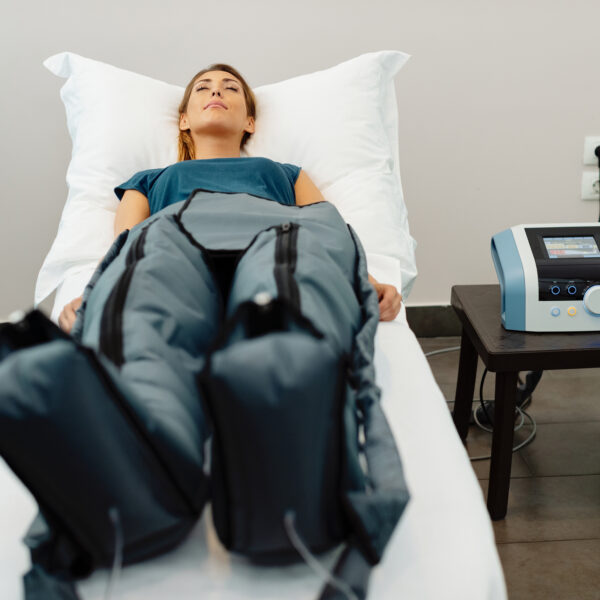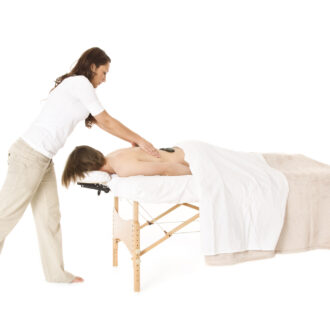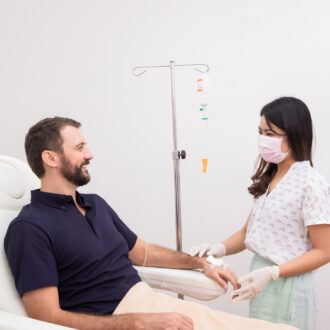Compression Therapy
Recover Faster with Compression Therapy
Compression therapy can feel similar to a massage, with varying amounts of pressure moving along your muscles to allow them to relax and stretch. While massage therapy relies on the expertise of the therapist, compression therapy uses medical devices to increase and decrease the amount of pressure being exerted on your legs, hips, or feet. This equipment uses pneumatic pressure, air, to systematically inflate and deflate hollow sleeves that provide variable pressure on your legs or hips to improve circulation, decrease stiffness and swelling and reduce muscle fatigue.
Our Family Health provides compression therapy for our clients to help them speed their recovery, whether from a specific injury, an extra challenging workout or event, or too many hours on their feet.

Benefits of Compression Therapy
The pressure massage of compression therapy can help those suffering from aches and pains caused by a wide variety of causes. Whether stemming from an injury, overuse, or a chronic condition, it helps:
- Improve circulation
- Reduce muscle aches and pains
- Improve lymphatic function
- Improve flexibility and mobility
- Speed lactate clearance
While an excellent choice for most people, it may not be right for everyone. You can review the list of conditions that may prevent you from using it here. As with any medical procedure, be sure to consult with your physician to make sure this is a good choice for you.

Compression Therapy Pricing
Book your compression therapy at our Monroe, Georgia wellness center. Compression therapy can also be added to an IV treatment for $25. Call today to find out how!
Frequently Asked Questions Compression Therapy
What is compression therapy?
Compression therapy uses a pneumatic device to put a slight squeeze or pressure on muscles and therefore improves circulation and blood return to the heart. This decreases swelling and helps move good nutrients to tissue and toxins out of tissues.
What does compression therapy help with?
The squeezing of the muscles allows improved circulation which can help address swelling, muscle pain and flexibility.
What does compression therapy do?
Pneumatic compression is a therapeutic technique that involves a garment enveloping a limb (such as legs or arms) and applying rhythmic inflation and deflation. This cyclic motion aids in flushing out metabolic waste fluids and promoting the influx of oxygen-rich blood. This enhanced circulation helps alleviate muscle discomfort, reduce swelling, and supports pain management and faster recovery.
Does compression therapy help cellulite?
This is not a direct treatment for cellulite. Cellulite is a complex cosmetic issue involving the structure of fat cells and connective tissue beneath the skin. It primarily focuses on improving circulation, reducing swelling, and managing conditions like lymphedema or venous disorders. While it may temporarily improve the appearance of the skin, it does not target cellulite specifically. There are other methods and treatments, such as diet, exercise, and cosmetic procedures, that are typically considered more effective for addressing cellulite.
Does compression therapy really work?
It’s important to consult with your healthcare provider to determine the most appropriate treatment for your specific condition. Compression therapy has been shown to be effective in supporting various medical conditions through clinical studies and patient outcomes. Some conditions for which it is used include:
- Venous Insufficiency and Venous Ulcers
- Lymphedema
- Edema Reduction
- Exercise recovery
As with all treatment options and techniques, individual results may vary.
Is compression therapy safe?
It is considered safe and well-tolerated when used appropriately. Before booking a session, please check the contraindications in our consent form and consult with your medical provider if you have any existing health conditions.
Subscribe to Our Newsletter
Sign up to receive our latest news, events, and integrative help tips along with Dr. Plaster’s resource “Five Tips to Better Health."

Listen to Between Two White Coats
Learn about today’s most pertinent medical and wellness topics on our podcast.
Listen Now
